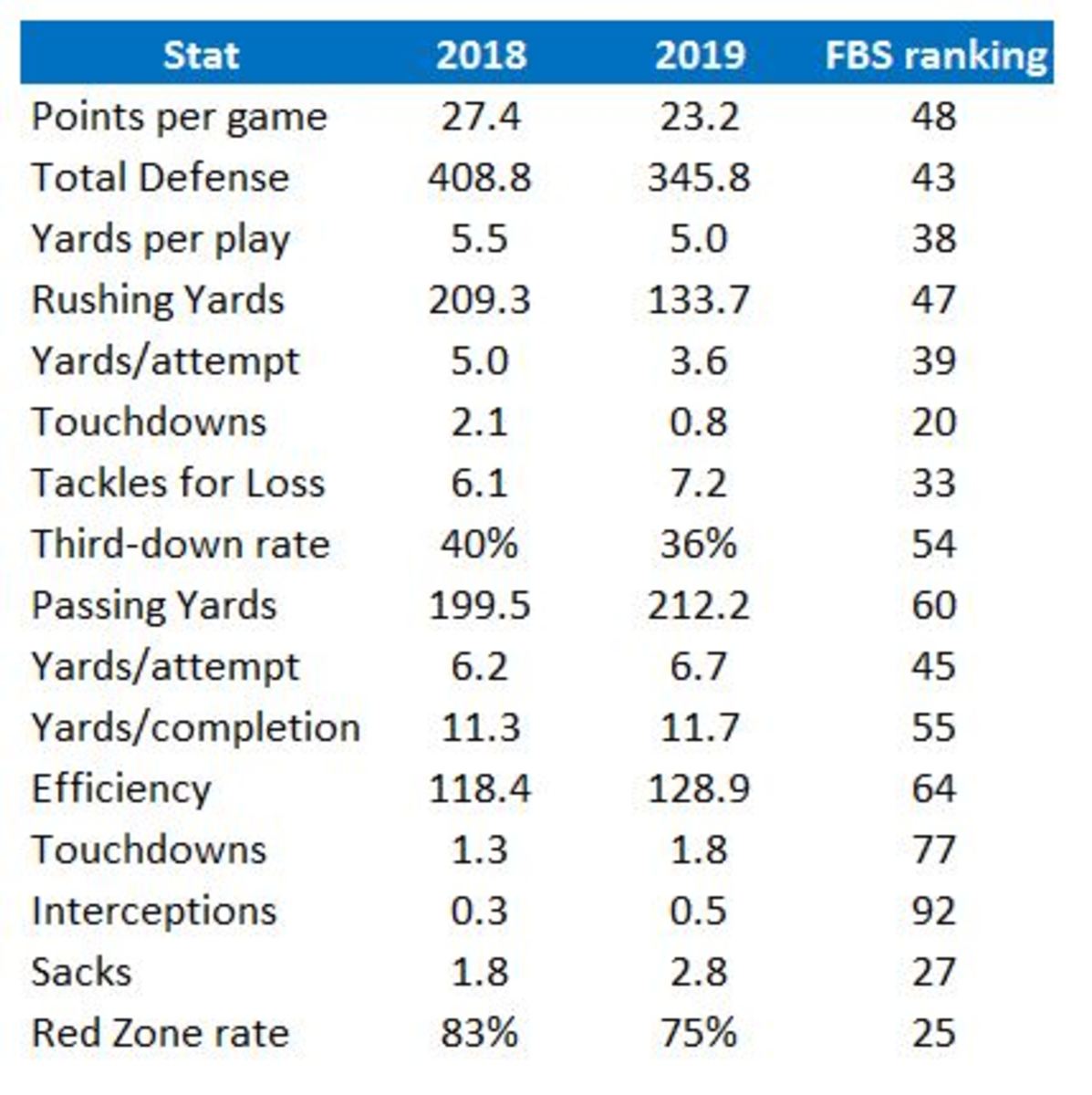Duke Midseason Report Card: Breaking Down the Defense

Entering the season, defense was an area where many thought Duke could show significant improvement over last year.
The Blue Devils played a large number of young players last season, to help cope with injuries, which helped build depth heading into this year.
Sure enough, six games in, Duke has shown improvement over last season in most statistical categories (2018 numbers are for the full season).

The Blue Devils are allowing four fewer points per game and 63 fewer yards.
What’s gone well:
1. Stopping the run: Duke lost its top two linebackers in team leading tackler Joe Giles-Harris and Ben Humphreys. Despite that, the Blue Devils are allowing 75 fewer rushing yards per game and are 20 in the nation in fewest rushing touchdowns allowed. That’s due in large part to a defensive line that has benefitted from the depth Duke built last year. Linebackers Koby Quansah and Brandon Hill have also stepped up into the void left by Giles-Harris and Humphreys. Pitt rushed for just 69 yards against Duke, the second worst performance of the year by the Panthers. Alabama’s 145 yards were its second lowest. The Blue Devils are also one of just two teams to keep Virginia Tech from rushing for a score.
2. Pass Rush: This was an area of significant weakness for Duke last year, and, again, the defensive line has led the way. Duke is getting a full sack per game more than last season, ranking No. 27 in the nation. The Blue Devils have also added more than a full tackle for less per game. Vic Dimukeje and Chris Rumph II (below) have led the rush.
3. Red zone: Duke is in the top 25 in the nation in red zone efficiency, after improving its red zone rate by eight percentage points over last year. Improved performance on third down has helped with that. Duke is getting off the field and preventing long drives. Opponents have had just five scoring drives of 10 plays or longer this season and four scoring drives that lasted five minutes or more.
4. Limiting explosives: Alabama had three scoring plays that went for 20 yards or more. Since then, Duke has allowed a total of four in the next five games.
Second half adjustments:
1. Pass coverage: While Duke hasn’t been bad against the pass, the Blue Devils have taken a step backward from last season. Duke is allowing more than 10 yards a game over last season’s average and an extra half a passing touchdown. Georgia Tech had its best passing day of the season against the Duke D.
2. Penalties: It doesn’t show up in the numbers above, but one of the biggest flaws on the defensive side for Duke this year has been penalties. Many of them have been out of character for a Duke team, with defenders getting personal foul flags for post-play shenanigans. Duke had an interception wiped out against Virginia Tech due to a roughing the passer penalty.
